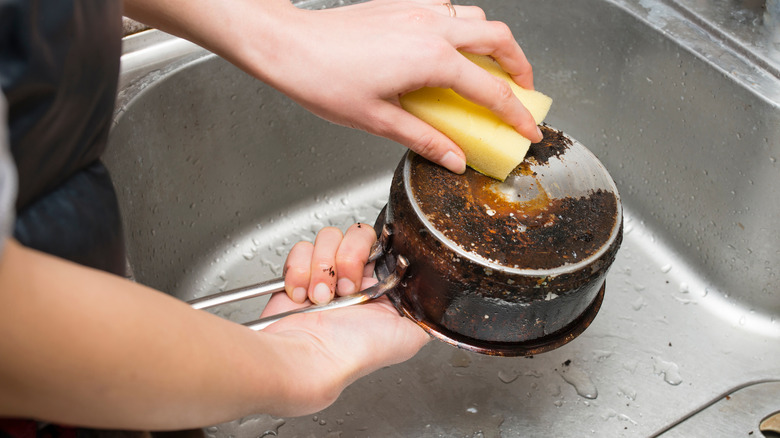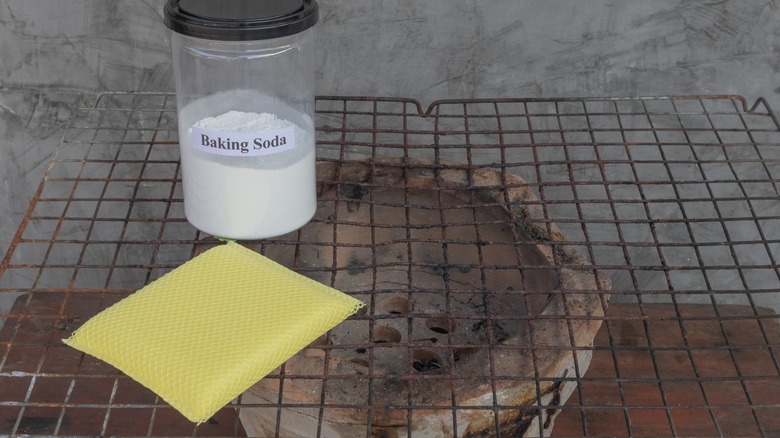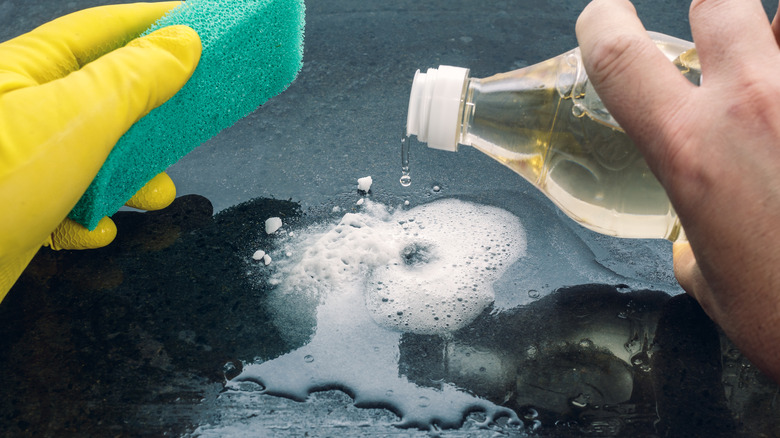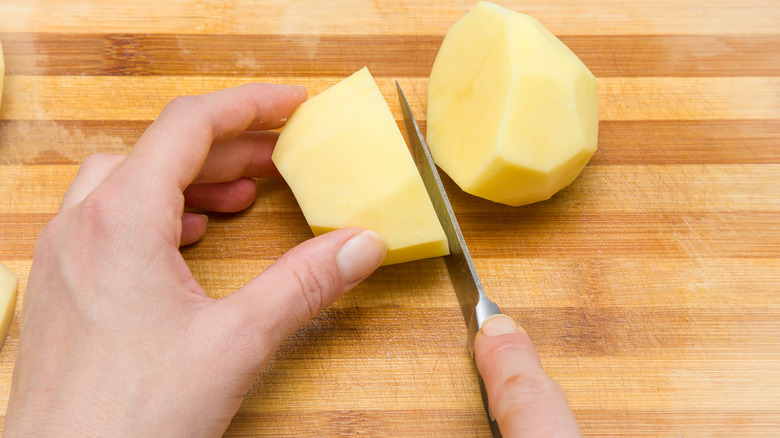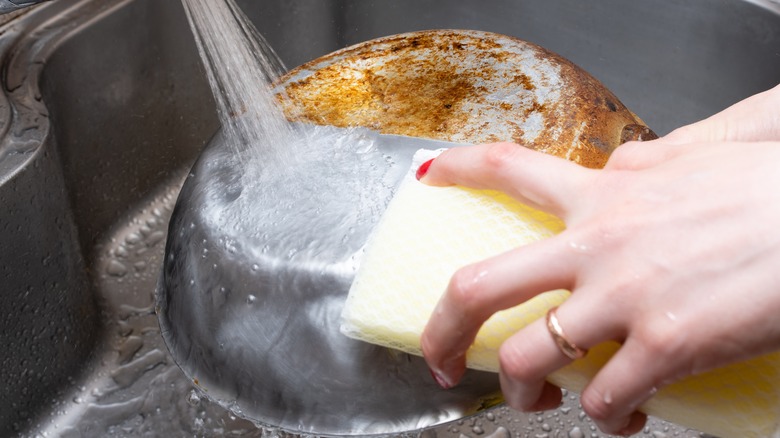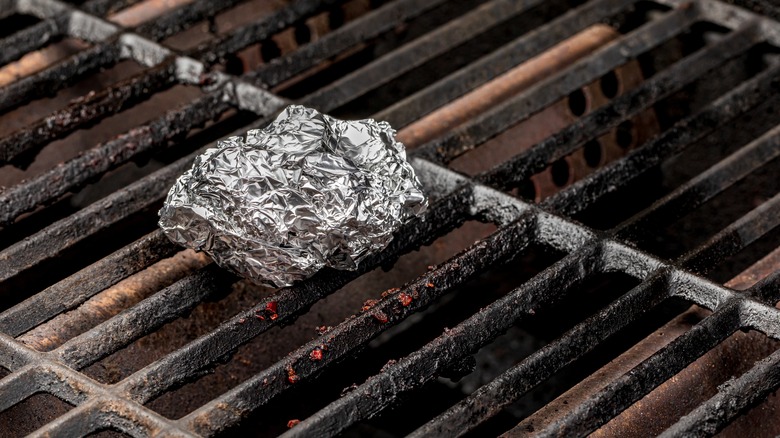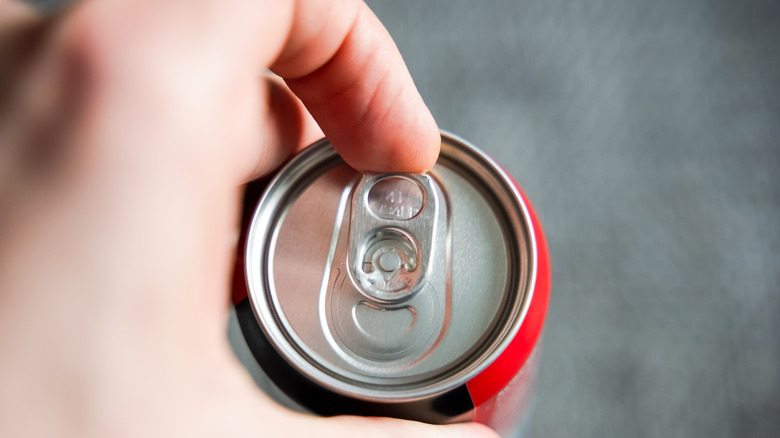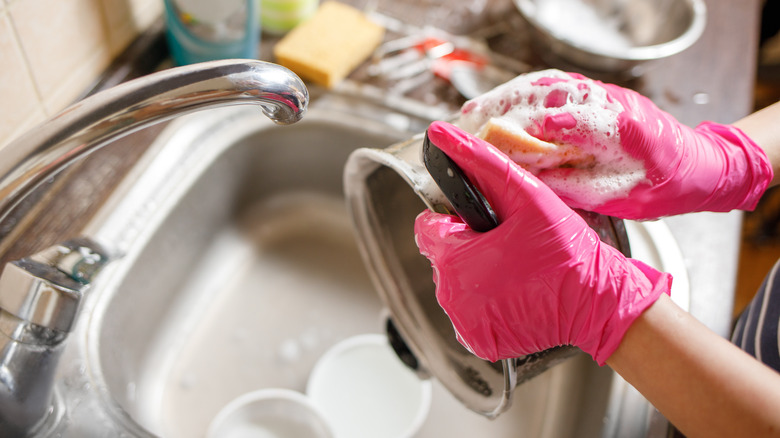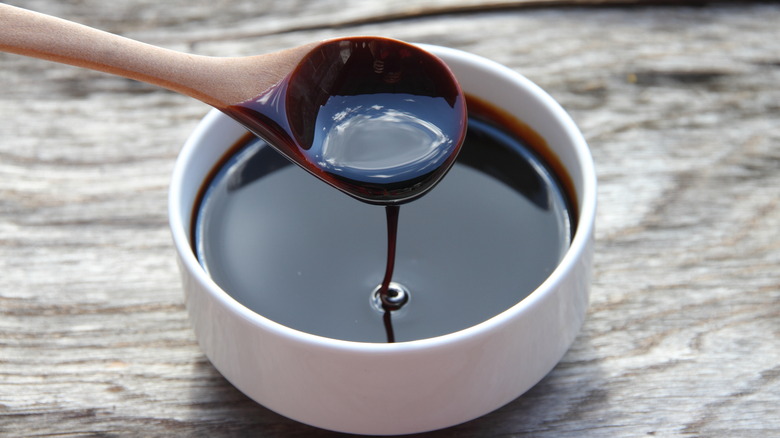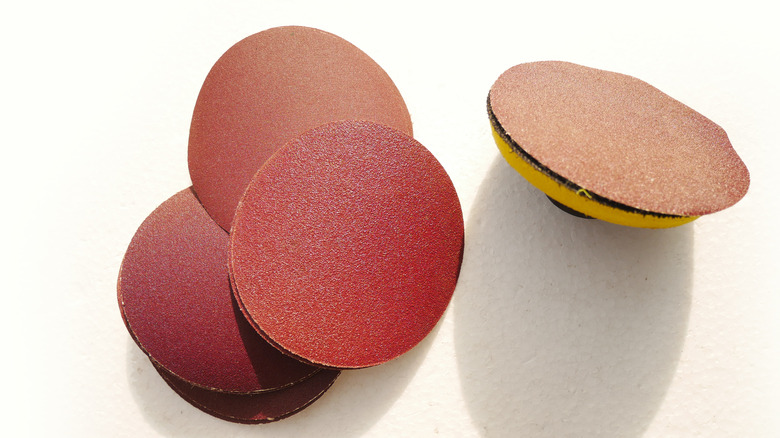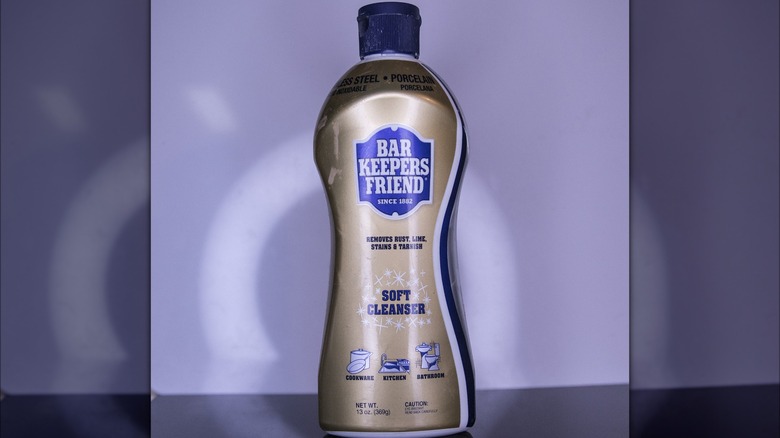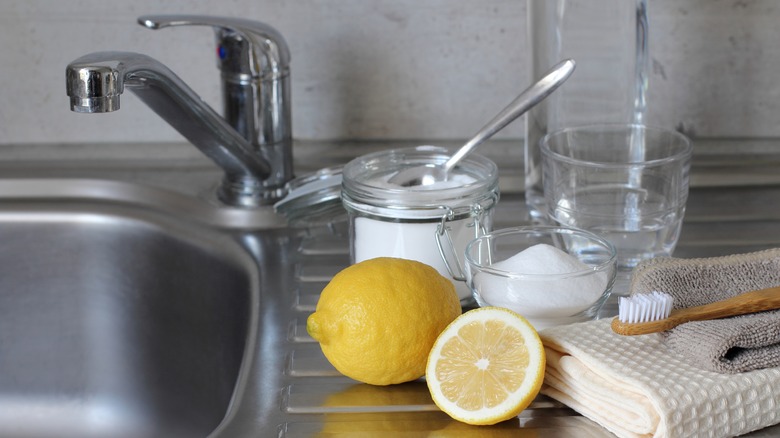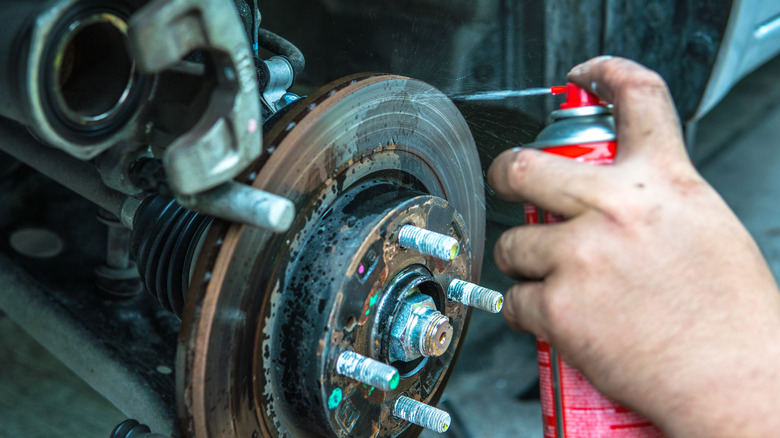Common Household Essentials You Can Use To Banish Rust From Stainless Steel
While the gleam of stainless steel pots, pans, appliances, and tools enhances your home's look, rust can ruin the natural shine. Even though this is a common problem, it's still frustrating. Knowing how to maintain your stainless steel items' functionality and aesthetic will allow you to keep your items looking like new for years. To do so, you'll focus on staples you have at home, ranging from white vinegar to baking soda, as helpful tools to fight rust and corrosion. Most conventional rust removal advice relies heavily on commercial-grade products over eco-friendly and cost-effective options, but you can use a mix of both to get great results. By highlighting the chemistry behind why items like lemons, potatoes, and even molasses act as rust's nemesis, you'll understand how these solutions work.
Also, considering each method's nuances is essential to help you remove rust without damaging your stainless steel surface. For example, you'll need to be careful when you apply a baking soda paste to prevent scratching, and patience is required when molasses gets to work. Along with learning how to tackle stubborn rust, you'll also learn how to avoid potential pitfalls, ensuring your stainless steel items look like new while also remaining damage-free.
Baking soda paste is mildly abrasive
Making a paste using baking soda is an eco-friendly and practical solution to help tackle rust on different surfaces, including stainless steel and ceramics. To create the paste, you'll add 1 part water and 3 parts baking soda into a bowl. Stir it until you get a thick, spreadable paste. Put the paste over the rusted area, ensuring you don't miss any spots. Leave it on for at least an hour. After an hour, get a non-metallic brush, sponge, or soft cloth, and gently scrub at the rusted spot, working in a circular motion. You should work in the direction of the metal's grain to avoid damage. This is a very good option for smaller rust spots, and you can add the paste to garden tools, utensils, or car parts.
Baking soda's physical texture and chemical properties effectively tackle rust. This is a very mildly abrasive formula, allowing you to scrub the rust safely without damaging the stainless steel under it. It is also more alkaline, which helps it break down rust so that it's easier to wipe away. A thick paste covers the surface thoroughly without running off. However, if you have heavy rust, you may find yourself repeating the process a few times. Do not use it on any surface with a high-polish shine because this can dull the finish.
White vinegar's acidic formula breaks down rust
White vinegar is an effective rust remover because of its acetic acid formula. Get a clean cloth and soak it with vinegar before wrapping it around the rusted item. Let it set for one to three hours, depending on how stubborn the rust is. For bigger items that can't be easily wrapped in a vinegar-soaked cloth, apply vinegar directly to the rust and reapply it to keep the spot moist for the same amount of time. Afterward, remove the cloth and wipe at the rust to loosen it. Use a soft brush or sponge to scrub for stubborn spots. Then rinse the treated area with water to clear any residue.
White vinegar's acidic content dissolves and loosens rust from stainless steel and metal surfaces. This acid penetrates the rust to break it down into smaller particles that are easier to scrub off, and this restores your item's appearance without using abrasive methods. The extended contact vinegar has with the rust gives the acid time to break it down. However, be very careful when you use it on some metals, especially stainless steel with a protective finish. The acid can etch or damage these surfaces if you leave it on too long.
Potato and dish soap make an effective combo
To use a potato and dish soap to tackle rust spots, cut the potato in half. Put dish soap directly onto the cut side of the potato, spreading it evenly across the surface. If you have a lot of rust, adding a sprinkle of salt to the potato will make it easier to scrub. Scrub the potato over the rusted area, using moderate pressure. The potato has natural acids that break down the rust and lift it from the surface when combined with dish soap's cleaning properties.
The potato's natural chemistry makes this an effective way to get rid of rust because it contains oxalic acid. This acid has a reputation for dissolving rust, and it starts breaking it down on contact. Combining it with dish soap emulsifies and lifts the rust particles, leaving the stainless steel intact. The dish soap also strips away any lingering residue that could cause the metal to rust again. If you add salt, this gives you a very mild abrasive element that helps you physically scrub the rust. This can be a very messy task, so you'll want to do it over a sink or other surface to catch the suds and debris.
Cream of tartar is another non-toxic cleaner
Mix cream of tartar and water to create a paste that can remove rust. It should be a thick, spreadable consistency. Add this mixture to the rusted spot on your stainless steel, and leave it alone for 10 to 15 minutes. Afterward, grab a soft cloth or a non-metallic brush and scrub at the rust. The cream of tartar will loosen and lift it, making it easier to wipe away without much scrubbing. As a bonus, it uses a food-grade ingredient that is safe and non-toxic.
Cream of tartar is very mildly acidic, which works on the rust. Since the acid is so mild, you can use it on more delicate surfaces, including polished ones, without dulling them. However, for polished surfaces that require scrubbing to remove rust, wash the cream of tartar off first, because it's mildly abrasive and can scratch it. After you finish, rinse with water to remove any leftover paste.
Aluminum foil can be repurposed for rust removal
You can repurpose aluminum foil to remove rust from metal. Dip a small piece of aluminum foil into vinegar or water. For the best results, start with water and go to vinegar if the water and aluminum foil don't work well. Crumple the damp aluminum foil into a ball to increase the surface area and make it easier to scrub, and gently rub at the rusted area. Don't push too hard or you can scratch it. Aluminum foil's flexibility lets it conform to the item's shape, making it very good to use on uneven surfaces.
Being able to remove rust with aluminum foil is due to the chemical reaction you get between the foil and rust when you add vinegar or water. The reaction dissolves the iron oxides in the rust. Additionally, the foil's texture helps remove rust particles when you scrub. However, be careful with this trick because it can leave scratches. Test this method on a small, inconspicuous area first to ensure it doesn't cause damage.
Cola offers a simple solution
There are several ways you can use cola around the house, including to get rust off of stainless steel. Soak a clean cloth or rag in cola. Put the cola-soaked cloth on the rust, ensuring it's thoroughly covered. Let it sit for a few hours, ideally overnight to get the best results. Using cola is very convenient because it's simple and easy to get, and you won't need specialized products. After the cola has time to work, remove the rag and use a sponge to scrub. The goal is to lift and remove the rust the cola loosened.
Cola has a decent amount of phosphoric acid, which works as a rust remover. This acid has a reputation for dissolving iron oxide, which is rust's chemical component. This process weakens the bonds and makes it easier to scrub the rust without damaging the stainless steel. However, using cola to clean rust can leave a sticky residue that you have to wash away, and it can potentially cause corrosion if you use it repeatedly. Use it sparingly, and rinse it thoroughly when you finish.
Borax is a gentle cleanser
Borax is an effective way to remove rust from stainless steel when you create a paste with water that has a toothpaste-like consistency. Apply the paste right on the rust, ensuring you cover every spot. Let the paste sit for 20 to 30 minutes to give the Borax time to loosen the rust's grip. This method works well for big rusted spots, and it's eco-friendly. Now you can get a sponge or a scrub brush and carefully scrub at the treated areas. Borax's abrasive nature, combined with the scrubbing action, helps remove rust.
Borax acts as a gentle scouring agent without scratching or damaging the stainless steel. This makes Borax great for use on various surfaces, from delicate metals to durable outdoor equipment. Borax uses a combination of physical abrasion and chemical interaction to break down rust. Rinse well so that Borax doesn't sit on the stainless steel and attract moisture, which can cause more rust to form.
Molasses will take time to remove rust
Molasses may be the key to removing stubborn rust stains from stainless steel. Mix a 1:10 ratio of molasses to water, or 1 cup of molasses into 10 cups of water. Stir until the molasses dissolves, and submerge the rusted item into the mix. Keep the item in this solution for several days, up to a week, for the best results. Remove the item from the solution, rinse it until the water runs clear, and dry it completely. Molasses' natural, non-toxic nature makes this method safe and environmentally friendly, offering a gentle alternative to chemical rust removers.
Molasses can remove rust due to its chelating reaction. Chelation is a process where organic molecules bind to metal ones, like the iron oxide in rust, to dissolve them. This process is gentle enough that it won't damage the stainless steel, and the slow action ensures it loosens the rust enough that you won't have to scrub it away and risk damaging the surface.
Emery paper and onion are a good combo
You can use a very fine emery paper with a slice of onion to give you double the rust-removal power on stainless steel. Start by getting a piece of fine emery paper. People use this to remove surface imperfections without damaging the metal under them. Gently sand the rusted spot, working in circular motions while applying even pressure for the best results. This method will remove the top layer of the rust to prepare it for more treatment. After you sand the spot, slice an onion and rub over this area. The onion's natural makeup and moisture will interact with the metal and target any leftover rust. This method works well for minor rust spots or items where you want to keep the finish. When you're done, rinse and dry.
This process works because the fine emery paper removes the rust using abrasion. Introducing onion to the mix lends a chemical component because onions have natural acids and sulfur compounds. Also, the moisture in the onion helps clean the sandy particles and rust.
Bar Keepers Friend is powerful but should be used with caution
Bar Keepers Friend is a powerful solution that tackles rust on different surfaces. Mix Bar Keepers Friend with a small amount of water until you get a thick enough consistency to stick to surfaces without dripping. Apply this paste to the rust on your stainless steel item, going just over the edges of the rusted spots. Let it sit for a few minutes to give the Bar Keepers Friend time to work. It's very effective on bathroom fixtures, kitchenware, and outdoor metal furniture. Afterward, use a sponge, soft cloth, or non-metallic brush to scrub the area to lift and remove the rust. To finish, rinse the area with water, ensuring no residue is left.
This product has a higher level of oxalic acid. This natural compound effectively removes tarnish, rust, and other stains from stainless steel without damaging the material under it. When the paste sits on the rust, the oxalic acid dissolves the rust so that you can wash it away. However, oxalic acid can irritate your skin and eyes, and can etch polished surfaces if you don't remove it completely after cleaning. Ensure you work in a well-ventilated area, wear gloves, and rinse thoroughly to avoid problems.
Lemon juice and baking soda make a natural mixture
Adding baking soda to lemon juice gives you a natural but robust solution to remove rust and clean stainless steel. Start by sprinkling a thick layer of baking soda over the rust. Then, cut a lemon in half and squeeze the juice onto the baking soda. You'll see fizzing, telling you it's starting to clean. Give this mixture an hour to sit or up to three hours for severe rust. It works well on small appliances, cutlery, and garden tools. Once the mixture penetrates the rust, scrub with a soft cloth, sponge, or brush to remove the rust particles. If you still see spots, add more lemon juice and baking soda and repeat.
Lemon juice works because it has a high citric acid content, and this is known for breaking down and dissolving rust. Citric acid gets into rust's bonds and weakens it, making it easier to strip away. Baking soda is a mild abrasive that helps you physically scrub the rust without damaging the stainless steel. You get a dual-action cleaner with these eco-friendly items. However, a 2021 study in the Materials (Basel) journal points out that leaving lemon juice on stainless steel for too long can cause pitting. So, make a point of rinsing the area thoroughly when done.
WD-40 leaves a shiny finish
WD-40 is a very popular product that is effective for treating surface rust. You can spray it directly onto the rust, or spray it onto a cloth and wipe it on. Aim the nozzle close to the rust if you want to spray it directly. For smaller or more delicate surfaces, spray it onto a clean cloth and wipe it on. Leave it for 15 to 20 minutes, or up to several hours, to give it time to sink into the rust and break it down. Gently wipe or scrub at the rust until it's gone, and then rinse the spot and dry it thoroughly.
There are several reasons WD-40 works to clean and remove rust from stainless steel, especially in tight spots. It loosens the bonds that hold the rust in place, making it easier to wipe or rinse away. Also, WD-40 is great at displacing moisture from the metal's surface, which is one of the root causes of rust. It has lubricating properties to help prevent rust and can form a protective barrier to repel moisture. Also, it'll keep your stainless steel looking nice and shiny afterward.
